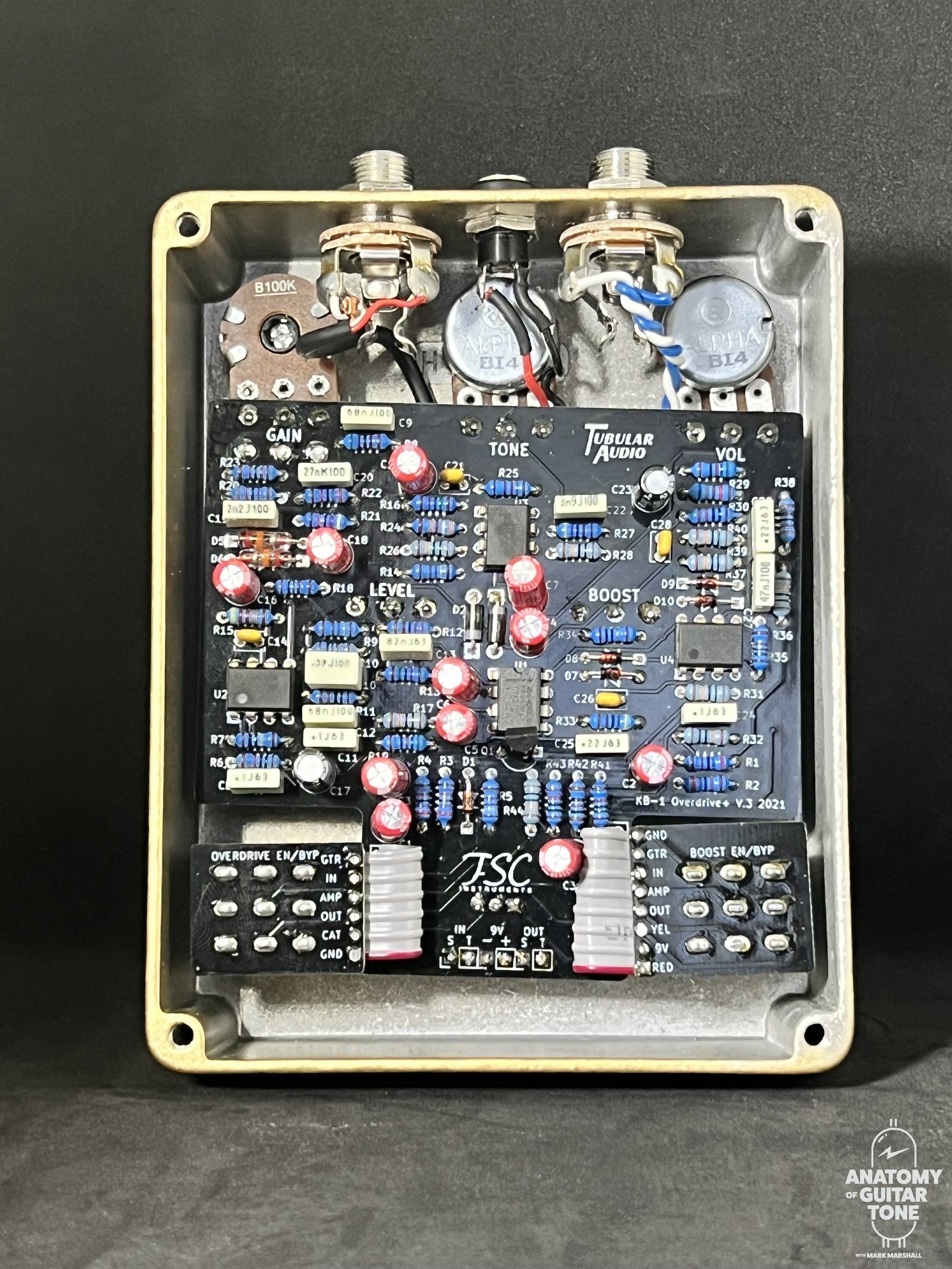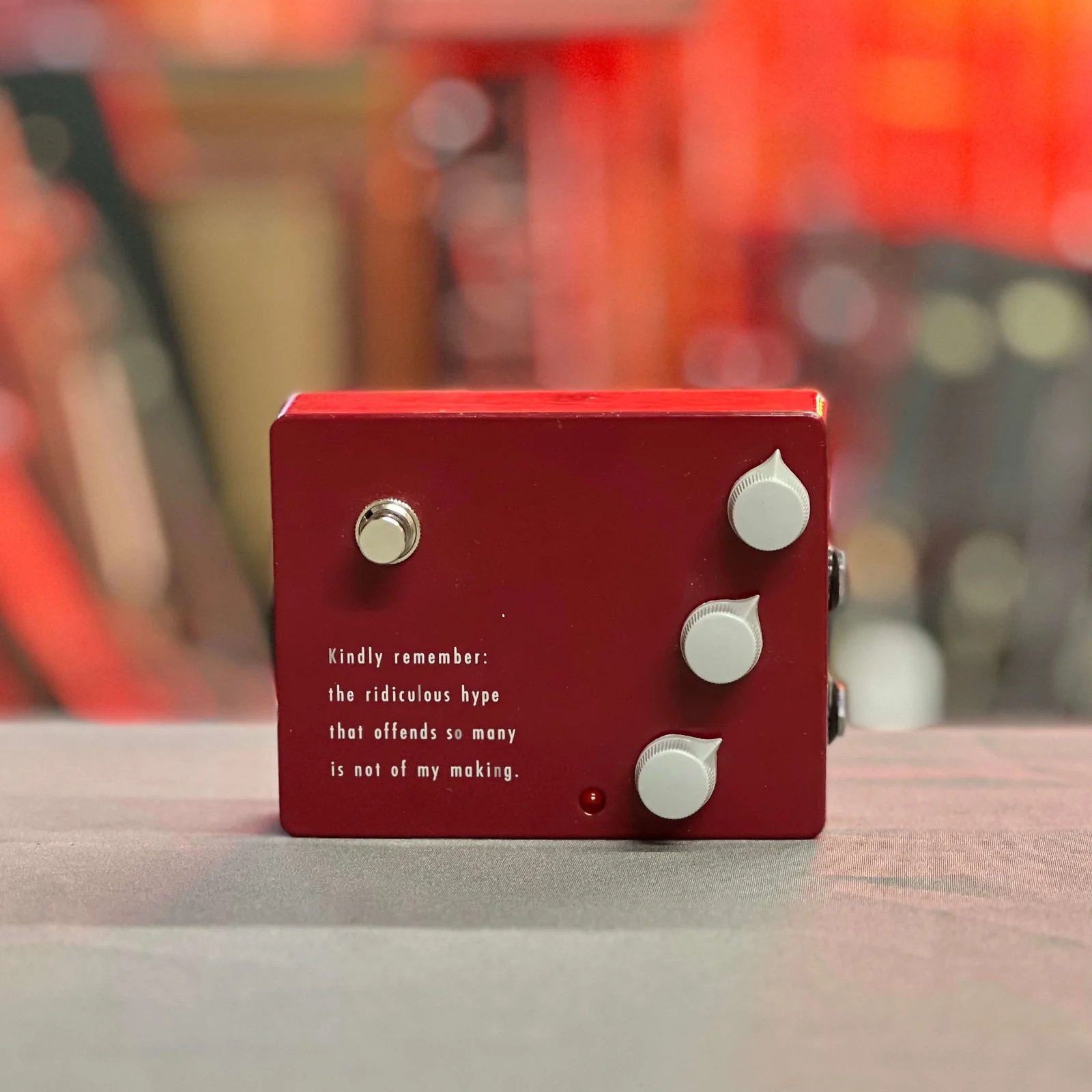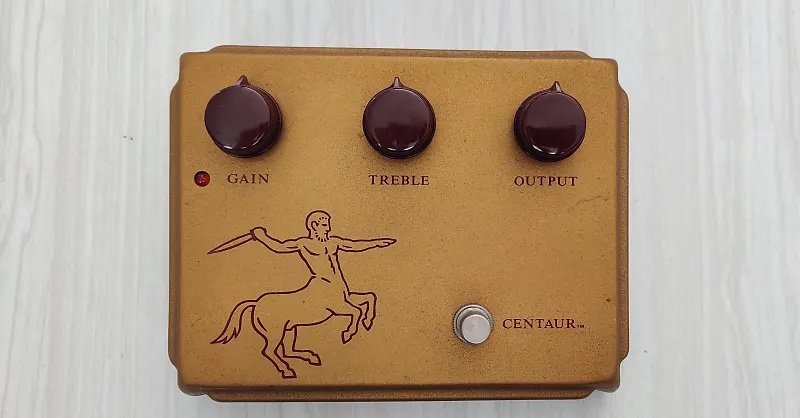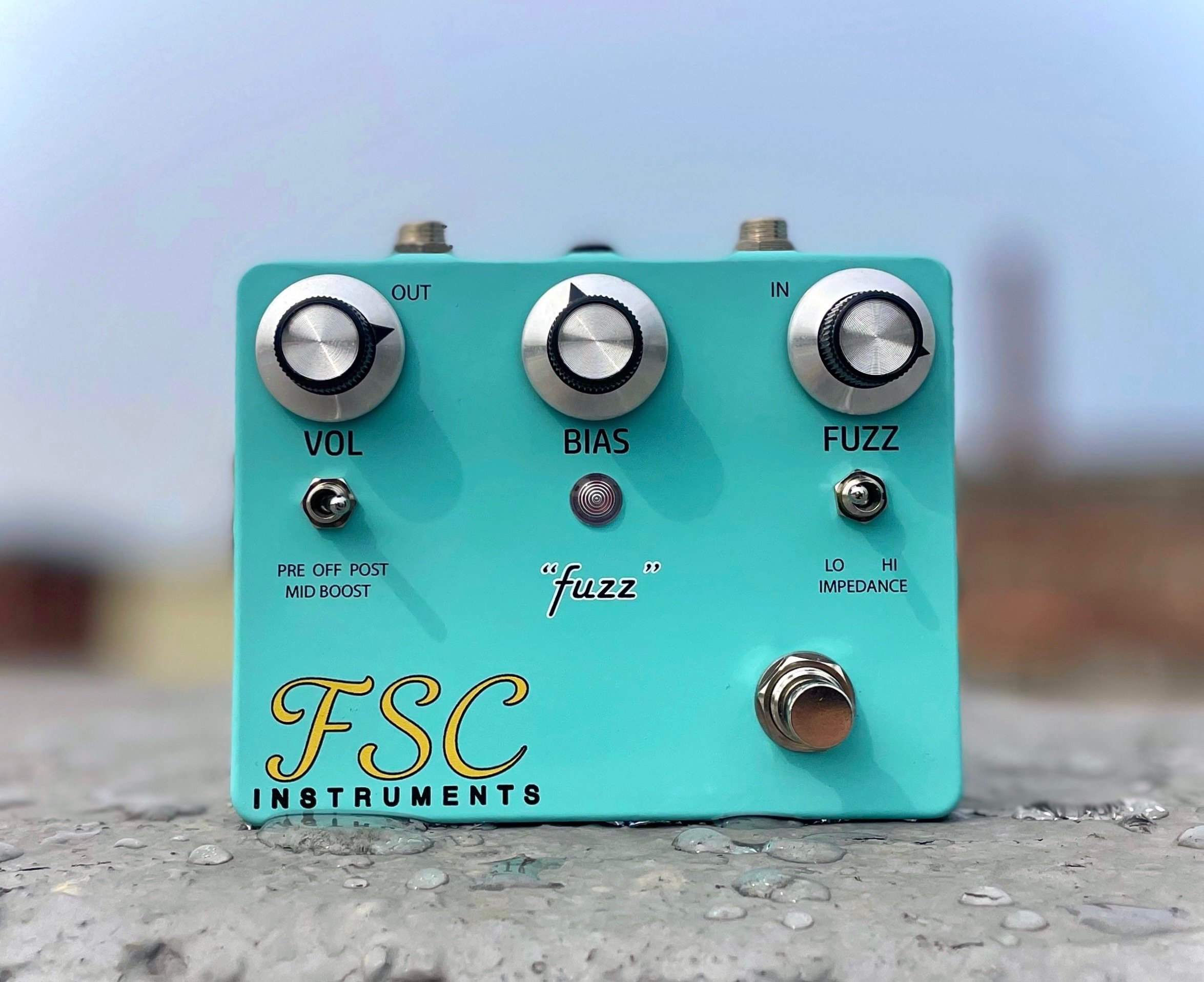FSC KB-1: Expanding Klon Possibilities
FSC Instruments has introduced a unique version of the Klon Centaur circuit called the KB-1. Rather than simply creating a replica like many others have done, FSC Instruments decided to expand on the original idea.
However, it's important to understand the KB-1. It does contain the Klon Centaur circuit, allowing you to achieve 100% Klon tones. But the KB-1 takes it further by incorporating an additional gain stage.
This second gain stage in the FSC KB-1 is silicon, combining germanium and silicon in series. This approach has never been done before in a Klon pedal. The second gain stage has its own gain and volume controls, which are helpful. Again, both sides of the KB-1 share the tone control.
The silicon side of the KB-1 is not for the faint of heart. When activated, it delivers a powerful and aggressive tone. I enjoy using the additional silicon stage when playing noise rock and experimenting with atonal textures. It provides a high level of gain and imparts a cool garage-like character to the sound.
Comparisons
I compared the KB-1 to my Klon KTR and Archer Icon. I can vouch that the KB-1 has an authentic Klon tone with the Germanium stage. I've experimented using it with a variety of amps. With black panel Fender amps, I like to use it as a preamp. The KB-1 excelled at this and a boost in front of a Marshall Plexi. I've used it in front of a Vox AC15 to induce a little lot of Americana grit. It also pairs well with tweed rea Fender amps to puh more into their fuzz-like tone world.
FSC did a nice job with the design and build on this. The wiring is clean and feels roadworthy. It's no surprise being familiar with FSC Instruments guitars. Farhad (owner and master builder at FSC) makes fabulous resonant electric guitars from scratch).
People who like to use a Klon as a drive pedal will like the KB-1 as it leans toward drive. Of course, you can get a clean boost out of it. But, it makes a great dirt machine.
Klone Wars
I have personally compared the KB-1 to both my Klon KTR and Archer Icon pedals, and I can confirm that the KB-1 indeed captures the authentic Klon tone, especially with the germanium stage.
FSC Instruments has done an excellent job in terms of design and build quality. The clean wiring gives the impression of a robust and durable pedal suitable for road use. The KB-1 is not a mass-produced pedal with generic parts.
Drive
Those who prefer using a Klon as a drive pedal will particularly appreciate the KB-1, as it leans more towards the drive side. However, it can still deliver a pristine clean boost when desired. Overall, it excels as a dirt machine.
“There KB-1 makes a great dirt machine.”
I tried running it into other drive pedals for a cascaded effect, such as pairing it with the Effectrode Tube Drive and found it a great combination. In this case, I was using it as a gain boost for solos, where I wanted an increase in drive for more sustain.
This differs from how I sometimes use the KB-1 as an always-on pedal at the end of my chain. In this position, the KB-1 is meant to be the last stage before the amp input pushing the tubes harder. I usually use less drive when using the KB-1 last in the chain. It's mostly a boost with a little hair.
Placing the KB-1 last in the chain as a preamp is also a good way to help improve the tone of a bad backline amp. The KB-1 often gets used as a bandaid for re-issue Deluxe Reverbs and Twin Reverbs to contain their harshnsess.
Buffer
The KB-1 is a buffered pedal like the original Klon. However, the Klon KTR offers a selector switch with the option of a buffer off or on, which is often regarded as better. I can't entirely agree with that sentiment, but it's a matter of opinion.
Despite my disdain for buffers, the FSC KB-1 is a very flattering buffer and doesn't have any of the plastic-sounding tendencies of the majority of buffers I've tried.
Pedalboard Real estate
One feature of the KB-1 that I appreciate is the top-mounted jacks, which allow for a more compact pedalboard setup. But, again, this is a practical design choice—a choice made with the awareness of modern pedalboards and gigging musicians.
Power Regulator
Unlike the original Klon, the KB-1 operates with a standard 9V power supply. I once witnessed an incident at a guitar hang where someone accidentally used the wrong power supply with an original gold horsie Klon, resulting in the pedal being fried on the spot.
So, it's essential to be cautious with power compatibility, even though the Klon KTR can accept a regular power supply. However, the FSC KB-1 is more resilient to such issues.
Shape Shifter
Compared to other Klons I've used, the KB-1 is more versatile and capable of shape-shifting. However, while it can undoubtedly achieve the classic Klon tone, it can also deliver an utterly uncolored boost.
“ the KB-1 can be set transparent and perfectly clean”
The term uncolored gets thrown around a lot as a marketing word. I have felt very few devices you put in your signal are genuinely transparent. But, the KB-1 can be set transparent and perfectly clean.
Moreover, the KB-1 allows for more saturated sounds and facilitates easy feedback generation. In some ways, I feel those fond of fuzz and saturation would connect more with the KB-1 than with an original Klon.
It's fascinating to witness how the Klon circuit is being adapted and explored in different ways to suit various guitar-playing mindsets.
Fuzz me out
At certain points, the KB-1 mimics a fuzz-like character. However, it's unlike any fuzz pedal you've heard before. I consider myself a fuzz connoisseur, collecting and studying various fuzz pedals to understand their differences.
The KB-1 fuzz-like qualities with the boost channel engaged are fuzzy without the flabby low end often associated with fuzz pedals. Or it can give you the signature boost with grit and minimal compression the circuit became known for.
There are a lot of ways you can use a Klon. I wrote an article about it as some need to be made aware of the original intended purpose of the Klon. But remember, there are no rules.











